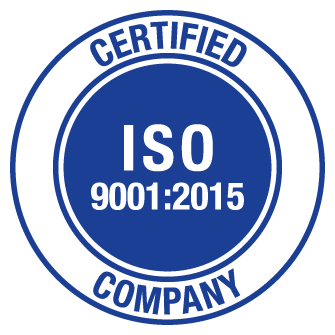WDV- If you select WDV, the Depreciation amount is calculated as per WDV formula and chart is generated. A company claims Depreciation under the Income Tax Act, 1961 to reduce the taxable income of the company. The Depreciation Formula and the useful life is being provided in Schedule II of Companies Act, 2013 to calculate the rate of depreciation as per Companies act. Depreciation as per the Companies Act involves allocating the depreciable amount of a tangible asset over its useful life, following the provisions outlined in Schedule II. An adjusted cost basis is the asset’s original cost basis used to compute depreciation deductions adjusted by allowable increases or decreases.
Businesses should refer to Schedule II for updated depreciation guidelines and apply them appropriately in their financial statements to maintain transparency and accuracy. Depreciation as per new companies act is allowed on the basis of useful life of assets and residual value. For all other cases calculate depreciation rate using our depreciation calculator. Amortisation in such cases may be done as prescribed in para 3(ii) of Part A of Schedule II.
Depreciation rate as per Schedule II of Companies Act, 2013 applies to assets purchased on or after 1st April 2014. 4.Triple Shift depreciation- Depreciation increases by 100% for the period in which the asset is in use for triple shift. 3.Double Shift depreciation- Depreciation increases by 50% for the period in which the asset is in use for double shift.
Depreciation on Leased Assets
Useful life of an asset is either(a) the period of time over which an asset is expected to be used by the enterprise or(b)the number of production or similar units expected to be obtained from the asset by the enterprise. (5) Selecting the Depreciation method.SLM- If you select SLM, the Depreciation amount is calculated as per SLM formula and chart is generated. If there is any addition to the asset or asset is sold, discarded, demolished or destroyed then the calculation is made according to the date of such event.
( What is the depreciation rate on tally software ?
If you wish to calculate your IDV during this period, the depreciation rate applicable is 20%. To calculate the depreciation of your bike, you can use IDV calculators available on the websites of different insurance providers. The IDV of your bike is generally not calculated based on the price of the vehicle during purchase. This calculator considers its market value from the commencement of the policy. The value of your car or bike continues to decrease after five years, although being dependent on its condition and serviceability. When you buy a car or bike, its value diminishes slowly with time due to natural wear and tear.
- Companies Act 2013 also provides the depreciation rate applicable to motorbikes.
- The primary method for steady depreciation is the straight-line method.
- The value of your car or bike continues to decrease after five years, although being dependent on its condition and serviceability.
In this branch of accounting, the calculated loss in value of an asset is considered a determining factor. Determining depreciation is often tricky as the reduction in the value of an asset is subjective and does not represent actual cash flows. Companies attempt to make the closest approximation of the real depreciated value of an asset. Determining depreciation is necessary as the profit and loss margins of the company vary on its basis.
Such depreciation occurs because of obsolescence through market or technological changes, the passage of time, an increase or decrease in the supply and demand ratio, or industry-specific changes. During the expected useful life of an asset, a fair proportion of the depreciation amount in every accounting period is charged as depreciation. The depreciation charged on depreciable assets is recorded as an expense in the profit and loss account.
- The Companies Act, 2013, governs corporate affairs in India and includes provisions related to depreciation.
- Accurate depreciation accounting ensures that a company’s financial statements present a true and fair view of its financial position.
- This provides a more accurate view of a company’s performance in a given reporting period, as both expenses and revenues are accounted for.
- Depreciation is the measurement of an amortisation asset’s decline in value due to usage, the passing of time, or expiration due to technical or industry developments.
- Depreciable assets are those assets that are used for the purpose of business which can be depreciated.
Investment in Post Office Time Deposit Account (POTD)
Thus, depreciation serves the purpose of calculating a company’s actual value of assets. Depreciation is an important accounting concept that helps businesses allocate the cost of an asset over its useful life. The Companies Act 2013 provides specific depreciation rates for different assets under Schedule II, ensuring a uniform method for calculating asset depreciation in financial statements. The depreciation charged as an expense in the Profit & Loss A/c helps compensate the company for the value lost on the depreciable assets.
Investment in TERM LIFE INSURANCE
The desktop has a three-year life cycle, according to the depreciation schedule. Save taxes with Clear by investing in tax saving mutual funds (ELSS) online. Our experts suggest the best funds and you can get high returns by investing directly or through SIP. Download Black by ClearTax App to file returns from your mobile phone.
While Schedule II specifies the useful lives of assets, companies can derive depreciation rates based on these useful lives. For instance, if an asset has a useful life of 10 years, the depreciation rate under the Straight Line Method would be 10% per annum. The Companies Act, 2013, governs corporate affairs in India and includes provisions related to depreciation. Section 123 of the Act mandates that depreciation should be provided in accordance with Schedule II, which specifies the useful lives of various tangible assets.
As per the companies act, the residual value of an asset should not be more than 5% of the asset’s original cost. As per companies act, the residual value of an asset should not be more than 5% of the asset’s original cost. Residual value of an asset must not be more than 5% of the asset’s original cost.
Calculate Depreciation as per Companies Act, 2013
Therefore, depreciation on the car as per companies act 2013 is 31.23% under WDV & 11.88% under SLM. Therefore, depreciation on mobile is 18.10% under WDV & 6.33% under SLM. Below is the journal entry to record depreciation on office equipment. The useful life of a laptop given under schedule II of Companies Act 2013 is three years. Business can opt any of the below methods of depreciation calculation as per companies act.
However, companies can determine a different useful life based on technical evaluation, provided such deviation is disclosed and justified. Yes, depreciation rates may be updated based on amendments to the Companies Act or new government policies. It is advisable to stay updated with regulatory changes depreciation on car as per companies act and refer to the latest provisions.
This makes the process simpler, as it eliminates the need to calculate depreciation for each individual asset. The Income Tax Act prescribes different depreciation rates for various assets, and they might differ from the rates under the Companies Act. It is pertinent to note that the rate of depreciation under the Income Tax Act of 1961 depends on the Union Budget of each Financial Year.




